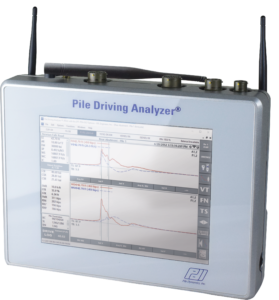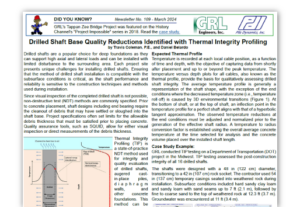Can the condition of a shaft’s top and bottom be discerned from TIP™ results?
Temperature diffusion is purely radial along most of the shaft’s length. Engineers can observe a nearly linear relationship between temperature and radius near the cage. To do so, they need to know the normal temperature distribution across the shaft. The normal temperature profile appears rounded because at the shaft’s ends (top and bottom) the temperature is diffused both radially and longitudinally.
The temperature “roll-off” is normal. If the temperature curve at the shaft’s ends fits a characteristic hyperbolic tangent shape, then the shaft end conforms to a cylindrical shape. If the temperature curve does not resemble a hyperbolic tangent shape, then the shaft’s integrity becomes a concern. For example, the lack of a hyperbolic tangent could suggest that the shaft has a soft bottom. Engineers can use numerical algorithms to correct the temperature to radius correlation. They can do so based on the proximity of the shaft’s ends and the normal in situ regional soil temperature.
Return to FAQs



